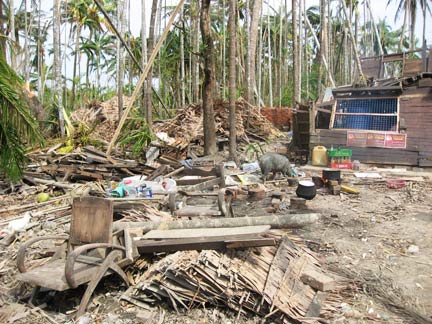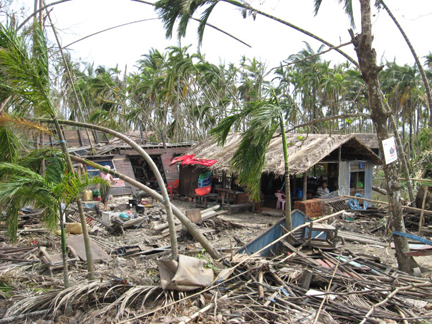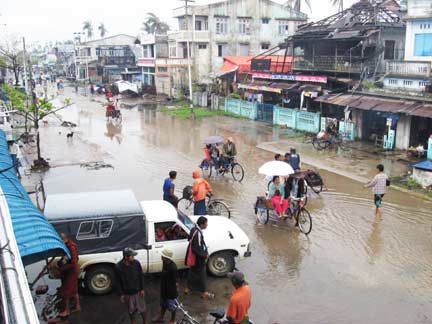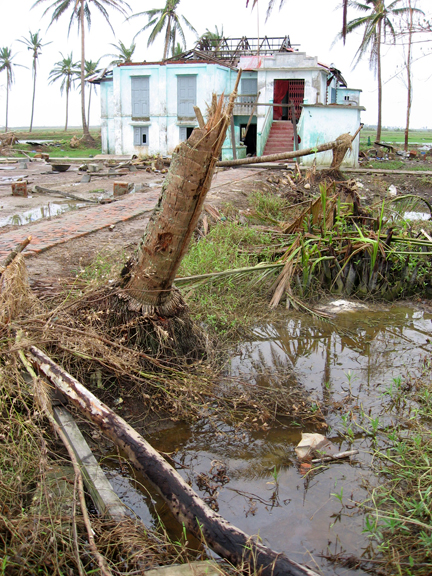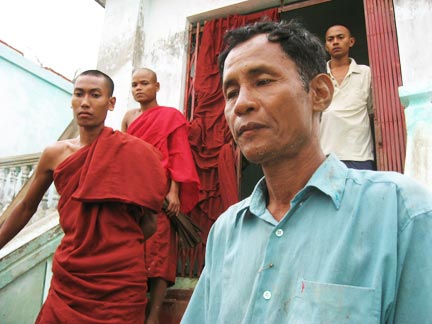Myanmar - photo-report
A trip into the heart of destruction
Article published on the 2008-05-16 Latest update 2008-05-16 13:24 TU
“We arrived in Bogalay after having avoided three checkpoints, one run by the army. 95% of the dwellings, often made of bamboo and sheet metal, were damaged or completely destroyed by the cyclone,” writes Auberger.
“Not helping one bit, the monsoon rains have arrived early this year, flooding the streets of the town. This complicates the emergency operations and aggravates the risk of disease.”Thousands of refugees have gathered in the town, further straining the infrastructure as reconstruction begins, Auberger reports.
After visiting the town, Auberger took a boat ride on the Irriwaddy river delta to meet those who have stayed on their farms.
“After an hour and a half on the boat – which we spend hidden underneath tarpaulins – we arrive at our destination: the village of Kayan, or rather what is left of it – in other words, almost nothing!”
“The place has litterally been swallowed by the waters, suffocated by the winds, crushed by the storm! Only the monastery has resisted the tempest.”
A villager tells his story: “The water rose two metres and the wave took everything. We weren’t prepared for that. All the houses were destroyed. Today, the 300 survivors have left for Bogalay to find aid. Me, I’m staying here with the monks.”
Auberger returns to Yangon with some of the Monks who aided him on his journey. Thousands of refugees walk along the roads beside him.




